Nobel Prize 2002 Multi-year work compensation
On the other hand, Daniel Kahneman and Vernon L will receive the Nobel Prize in Economics. Smith ek; the first to apply psychology to economic studies and the second to use laboratory experiments in the study of empirical economy. Hungarian Imre Kertesz, a candidate for literature for years, and former US President Jimmy Carter have been the winners.
Nobel Prize in Physiology and Medicine
Sydney Brenner, H. Robert Horvitz and Jonh E. Sulston Sulston
Control of organ development and cell death
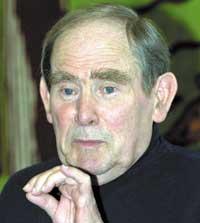
The cells that form the human body are of hundreds of types, all of them derived from a fertilized cell. In embryonic and fetal phases, the number of cells increases dramatically, specializing in the formation of organs and tissues. Numerous new cells are also formed in the adult body. At the same time, for the number of cells in the body to be adequate, the cells die and that death is scheduled.
To understand all this, the research of the winners of this year's Nobel Prize in Physiology and Medicine has been fundamental. The three scientists have identified the genes that control the development of organs and cell death. To do this they have worked with the nematode Caenorhabditis elegans, which has opened the way to study what happens in humans.
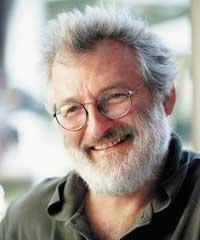
In fact, Sydney Brenner was the first person to work with this nematode, seeing that it is ideal for analyzing cell separation and organ development. Brenner combined microscopic study and genetic analysis of cell division and differentiation and received the award for the findings that emerged after that union.
John Sulston continued Brenner's work and developed techniques to study the cellular division of nematode. In addition, it showed that cells, in their division and separation, always follow the same rule and that cell death is part of this process. In addition, it demonstrated for the first time a mutation of the genes involved in programmed death.

Robert Horvitz, following the line of the previous two, has made basic discoveries about the genetic program that controls cell death. He identified some genes related to C. elegans cell death and observed the presence of this type of genes in humans.
Understanding the programming of cell death is essential to know the essence of certain diseases. In AIDS, after suffering an infarction and in some degenerative diseases, cells are lost because the process of death accelerates. In other diseases, the opposite occurs, such as cancer and autoimmune situations, the cells that should die are still alive. It is not surprising, therefore, that the Nobel Prize in Physiology and Medicine is granted to these three researchers, who are the basis of the investigations that are being carried out today.
Nobel Prize in Physics
Raymond Davis, Riccardo Giacconi and Masatoshi Koshiba
Nobel Prize in Physics for Neutron and X-ray Research

Three astrophysicists will take the Nobel Prize in Physics this year: Raymond Davis and Richard Giacconi Americans and Japanese Masatoshi Koshiba.
Davis and Masatoshi compensate with the Nobel Prize the work done in the detection of cosmic neutrinos and Giacconi the discovery of cosmic sources of X-rays. "These researchers, as noted by the representatives of the Nobel Academy in awarding the prize, have analyzed the small elements of the universe so that we better understand other great ones: the best knowledge of the Sun, stars, galaxies and supernovae. Thanks to this, today we have a new vision of the universe."
Ultramar radiation
The sun emits light and heat. This has always been said. However, in this list of emissions there is no matter, and instead of light it would have to say radiation, since in addition to what is seen at first glance, ultraviolet, infrared, X-ray and other waves arrive on Earth. But those who live on the surface are in a bubble, that is, the atmosphere does not allow the entrance of all radiations; it reflects some types of light out. Among the radiations that remain at the threshold of the planet are the X-rays. Less bad.
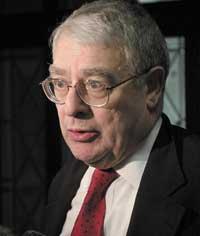
The American astrophysicist Riccardo Giacconi has dedicated his whole life to the study of the remaining X-rays because they bring us news of space. It is not an easy task, because to see what is left out of the atmosphere you have to look with a telescope that is out of the atmosphere. Giacconi made the first X-ray telescope and opened its doors to X-ray astronomy. This work deserves the Nobel Prize in Physics.
Detection of neutrinos
Physicists Raymond Davis Jr and Masatoshi Koshiba detected neutrinos through large underground liquid tanks. The theoretical physicists were waiting for it because it reaffirmed the principle of conservation of energy.
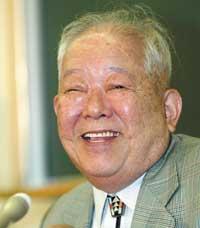
When the neutron disintegrates, a proton and an electron form. This reaction is called beta decay. But if this process were simply so, the sum of the energies of the products would be less than that of the neutral, that is, energy would be lost in the way.
In view of it, XX. At the beginning of the century there was a great crisis among theorists, was one of the basic principles wrong? Some physicists were in themselves. However, the Austrian Wolfgang Pauli proposed another solution: in disintegration, in addition to the proton and the electron, another neutron particle was generated, but until then it could not be detected. That is, the problem was the instrumental and not the theory of conservation.
The neutrino should be of very small mass and have very weak interactions that would allow him to adjust to the theory. Pauli's theory brought some calm to the physicists, but it was missing to detect particles. Davis and Koshiba receive this year the Nobel Prize in Physics to confirm what Pauli announced.
Nobel Prize in Chemistry
John B. Fenn, Koichi Tanaka and Kurt Wüthrich
The works of the winners bring tools to investigate proteins
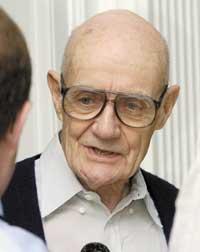
At a time when Genoma and, more and more, proteome go all the way, the Swedish Academy of Sciences has awarded John Fenn, Koichi Tanaka and Kurt Wüthrich with the Chemistry Novel. In fact, these three men developed two fundamental tools that are currently used for protein research. The Swiss Kurt Wüthrich invented the method to use nuclear magnetic resonance (EMN) with large biological molecules. American John Fenn and Japanese Koichi Tanaka developed techniques to identify and analyze these molecules through mass spectrometry.
Thanks to these two instruments, current researchers are able to quickly identify the proteins present in a sample, as well as the three-dimensional structure acquired by these proteins when they are in solution. With this information, it is much easier to understand how proteins work in cells. These techniques have revolutionized pharmacology, medicine and the food industry, among others. Imagine, the methods were developed in the 1980s and have already won the Nobel Prize.
Jump from small to large molecules
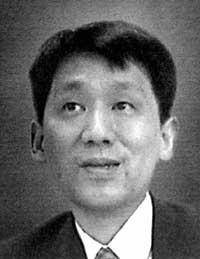
NMR and mass spectrometry are no new techniques. Fundamentals of mass spectrometry XX. At the beginning of the twentieth century he put Joseph J. Thompson and NMR is a mid-century invention. They have been used for a long time in the world's chemical laboratories to perform all kinds of analyses, but until the contributions of Fenn, Tanaka and Wüthrich only served for small molecules. Proteins, being large and complex molecules, were out of reach.
To determine the three-dimensional structure of a molecule using EMN, it is subjected to a powerful magnetic field and studies how atoms absorb radio waves. The scientist works from a collection of bulls on paper, but the proteins, being thousands of atoms, give crazy results. Wüthrich developed a systematic method of extracting information from this mixture of data, sequential mapping, and since then it has been possible to determine the structure of thousands of proteins. In addition, the method works in the solution, that is, in the same state in which proteins are found in the body.
Mass spectrometry

Mass spectrometry is a very powerful tool for sample analysis. It distributes and identifies molecules in mass and is sensitive to very small amounts, but in the identification process the molecules must become gaseous ions. With small molecules it is not difficult, but with proteins yes. Fenn and Tanaka, for their part, developed two methods of ionization and maintenance of suspended proteins, applicable to mass spectometry.





